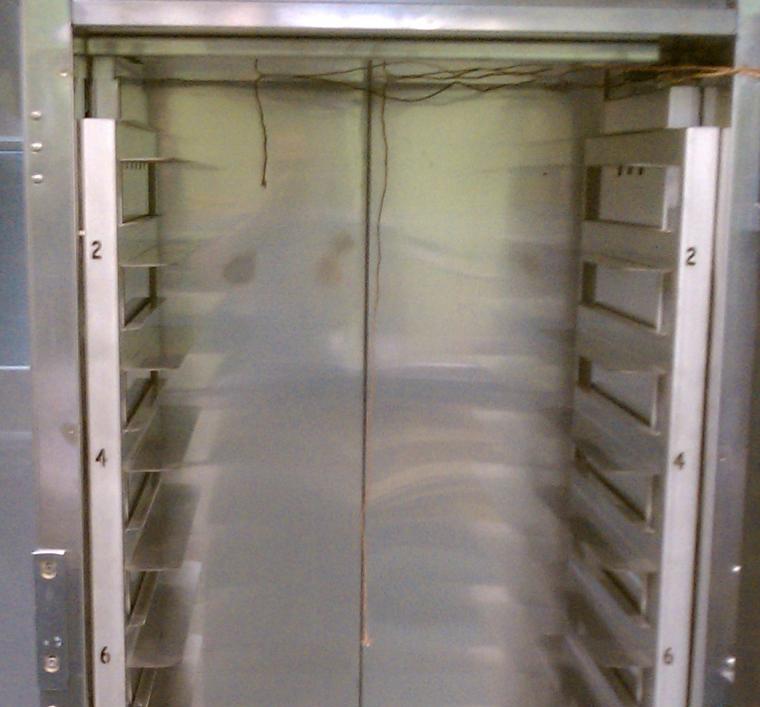Project Info
COMPLETE
 Project Title
Project Title
 Project Title
Project Title
Hot Food Holding Cabinets for Foodservice
Project Number ET10SCE1310 Organization SCE End-use Process Loads Sector Commercial Project Year(s) 2010 - 2011Description
Laboratory evaluation of hot food holding cabinets using ASTM test standards to develop data set for work paper development.
Project Results
The hot food holding cabinet is widely used and is a versatile piece of equipment generally used in commercial kitchens. These cabinets are mostly used to; keep food at a safe serving temperature; keep serving plates warm, and to transport food for catering events. In addition, these hot food holding cabinets are lightweight for easy moving, yet strong enough for everyday use.
These cabinets can be plugged into any wall outlet and sit on large wheels for easy mobility. The insulated cabinet utilizes magnetic door gaskets, auto door closers etc that provides additional energy saving attributes to these cabinets.
This project assesses the energy efficiency level of the FWE model number TST-16-EPL hot food holding cabinet to determine an appliance baseline and a minimum energy efficiency level in order to qualify for the food service qualifying product list. This project also assesses the energy input rate, amount of energy consumed during holding cabinet preheating and idle energy rate. This test method was based on the reapproved version of ASTM F2140-01 (revised July 23, 2010) “Standard Test Method for Performance of Hot Food Holding Cabinets”.
Testing was performed at the Southern California Edison (SCE) Foodservice Technology Center (FTC) in Irwindale, CA. The test data provides key information to help determine the operation costs and the percentage of total kitchen productivity a single appliance can deliver.
Testing for the idle energy rate or energy consumption began after preheating the cabinet and stabilized at 150° Fahrenheit (F) for two hours after inserting sheet pans at a predetermined position in the cabinet. The preheat test is the measure of energy consumed by the equipment in order to reach a temperature of 150°F, from a room temperature of 75 ± 2.5°F. The idle energy test reports the energy required to maintain a 150°F setpoint for a period of three hours or ten thermal cycles (whichever is longer). Idle energy consumption can be used to calculate real-world energy usage of the equipment.
Project Report Document
Loading PDF Preview...
